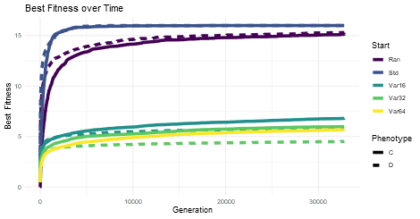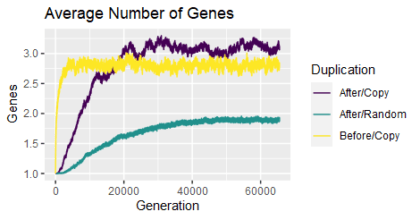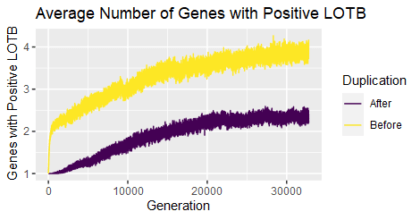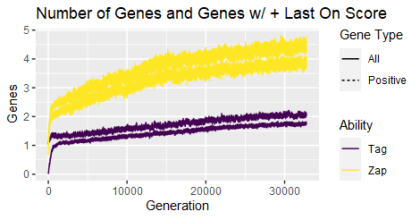So far, the explanation for dreams which resonated most for me came from Anil Seth's book Being You. The overall thesis of the book is that our conscious experiences are really predictions about the world around us which are updated based on input from our senses. Dreams, then, are what happens when the predictive aspect is decoupled from sensory corrections. Thus our dreams contain elements from our actual experiences but unconstrained by the need to correspond to anything, even themselves moment-to-moment. That … [Read more...] about Science Corner: Dreaming in the Academic Clouds
life finds a way out
Science Corner: Companion to Three Chromosomes in a Trench Coat
If you haven't been following along with Julie Reynolds' delightful series on phenotypic plasticity, I recommend catching up on that first. Julie shared some great real world examples, but not everyone has the opportunity to study overwintering insects like she does. So I thought I'd give you a hands-on example, albeit a simulated one. I've introduced my Quandary Den before. Briefly, players have to 'zap' or 'tag' robots for points, but the players have to evolve their gameplay approach. The versions I've shared before … [Read more...] about Science Corner: Companion to Three Chromosomes in a Trench Coat
Science Corner: Developing a Complex
For the past few weeks, we've been conducting experiments in the Quandary Den, a simple game simulation where the players evolve strategies. We've been looking at how complex solutions can evolve from simpler ones. So far, no single technical definition captures everything we mean informally by complexity, but for our purposes here I am describing a solution as more complex if it involves more distinct parts that are each individually essential. Last week we confirmed that there are neutral roads to such complexity, … [Read more...] about Science Corner: Developing a Complex
Science Corner: Traveling on the Level
When we last visited the Quandary Den, we saw how our players could take an adaptive path to complexity. By complexity, I mean that the solution to the challenge of the room involved multiple players making distinct and essential contributions. We saw that they were essential by looking at the last-on-the-bus (LOTB) score which looks at the difference between the team's result with that player and without. If a player has a LOTB score of zero, then their contributions are not essential; they might score one or more … [Read more...] about Science Corner: Traveling on the Level
Science Corner: Don’t Miss the Bus
Two weeks ago, we revisited the Quandary Den to see what happens when multiple players are able to work together. We did this by modeling gene duplication, a known biological process. Last week we saw some results showing that solutions involving multiple players could evolve, and when multiple players got involved solutions tended to come faster. At the same time, more wasn't always better; we saw that when players were added too quickly, they were more likely to get in the way and inhibit solutions. This little model … [Read more...] about Science Corner: Don’t Miss the Bus




